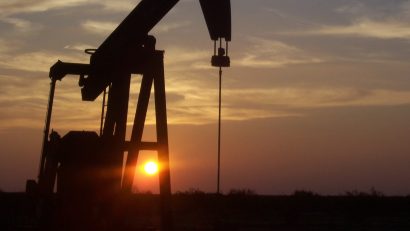The oil & gas industry is one of Canada’s most critical industries and has played a significant role in the country’s economy for several decades. Although the industry has contributed massively to the Canadian economy, discussions about the environmental impact of oil & gas production have become more relevant in recent years. Canada’s oil & gas industry is both a blessing and a curse, as it provides the country with a large portion of its energy and employment while impacting the environment in a myriad of ways.
The industry’s environmental impact comes in different forms, such as greenhouse gas emissions, habitat destruction, air and water pollution, and soil degradation. Canada is the world’s fourth-largest oil producer, with its oil sands producing an estimated 2.5 million barrels per day. The oil sands are among Canada’s largest sources of greenhouse gas emissions, and their extraction requires large quantities of water and energy. The production of oil sands also impacts wildlife habitats and deforestation, resulting in soil degradation and the loss of biodiversity.
The oil & gas industry’s environmental impact is not limited to the production phase but extends to transportation and refining. Pipelines, rail cars, and tankers are commonly used to transport petroleum products across Canada and beyond. The transportation of petroleum products can result in oil spills, polluting water bodies and causing environmental damage. Refining petroleum products also impacts the environment by releasing toxic pollutants, such as sulfur dioxide and volatile organic compounds, into the air.
Despite the industry’s environmental impact, it has significant benefits for the country and its citizens. A report by the Canadian Energy Research Institute found that the oil & gas industry contributed $120 billion to Canada’s GDP and created over 500,000 jobs in 2017. The industry also provided Canada with a reliable source of energy, helping to fuel the country’s growth and development.
However, although the industry has provided significant benefits, the environmental impacts cannot be ignored. It is therefore crucial for the industry and policymakers to look for ways to minimize the environmental impact while maintaining the economic benefits. There are several ways to achieve this, such as investing in renewable energy, improving energy efficiency, and implementing stringent environmental regulations.
The Canadian government has already taken some steps to reduce the environmental impact of the oil & gas industry. For instance, in 2018, the government introduced a carbon tax of $20 per tonne of carbon dioxide emissions, increasing every year until 2022. The government also recently announced its intention to achieve net-zero emissions by 2050, which will require a significant reduction in fossil fuel use.
In conclusion, Canada’s oil & gas industry is one of the country’s most critical industries, providing significant economic benefits while also impacting the environment in several ways. The environmental conundrum facing the industry means that policymakers, industry leaders, and other stakeholders must work together to reduce the environmental impact while maintaining economic development. It is clear that reducing the environmental impact of the oil & gas industry will require innovative solutions and conscious efforts by everyone involved. However, with the right policies and investments, Canada’s oil & gas industry can continue to contribute positively to the country’s economy while minimizing its impact on the environment.
EDITED BY QUILBOT
Canada’s Oil & Gas Sector: The Environmental Dilemma
Canada’s oil & gas sector has significantly contributed to the country’s economy and energy supply for many years. However, recent discussions revolve around the industry’s environmental impact, fueling much controversy. The sector holds a complex existence in Canada, a blessing in the country’s economic environment but causing environmental concerns.
Oil & gas extraction in Canada results in harmful impacts on the environment, including destruction of habitats, pollution, soil degradation, and greenhouse gas emissions. The oil sands, which are among Canada’s top sources of greenhouse gas emissions, produce 2.5 million barrels per day, affecting wildlife habitats, deforestation, and soil degradation.
The challenges do not end at production but extend to transportation and refining. Crude oil is often transported through pipelines, railcars, and tankers. Oil spills during transportation pollute water bodies and damage the environment. Refining also emits toxic fumes like sulfur dioxide and volatile organic compounds, which are detrimental to air quality.
The sector’s economic benefits are significant, contributing around $120 billion to Canada’s GDP in 2017 and employing half a million people. It is a reliable source of energy and an essential factor in the country’s growth and development.
Nevertheless, policymakers and the industry must find ways to reduce environmental impact while preserving the economic benefits. Canada is already taking steps towards this objective, including a carbon tax of $20 for every ton of carbon emissions and a net-zero emissions goal by 2050. Strategies include investing in renewable energy, boosting energy efficiency, and enforcement of environmental regulations.
In conclusion, the oil & gas industry is a significant contributor to Canada’s economy and energy supply. However, the industry’s environmental concerns are alarming and require immediate action. It is critical that stakeholders collaborate to reduce the sector’s environmental impact while preserving economic benefits. To achieve this, innovation and consistent conscious efforts are necessary to ensure Canada’s oil & gas industry continues to contribute positively to the world’s energy supply while minimizing its environmental harm.



